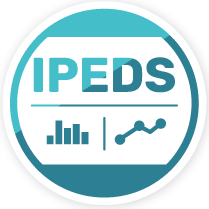Proposed IPEDS ACTS Component: AIR Community Survey Results
When the U.S. Department of Education proposed adding an Admissions and Consumer Transparency Supplement (ACTS) to IPEDS beginning in 2025–26, AIR recognized the importance of elevating institutional voices in that conversation. In partnership with AACRAO, ACE, APLU, and NAICU, AIR surveyed more than 580 higher education professionals to capture their insights about the proposal’s feasibility, challenges, and potential value.
The resulting article presents the key findings, concerns, and recommendations emerging from that survey—offering a grounded perspective on what institutions need to make ACTS work effectively, and where adjustments may be necessary.
EXECUTIVE SUMMARY
Background
The U.S. Department of Education has proposed adding the Admissions and Consumer Transparency Supplement (ACTS) to IPEDS beginning in 2025–26. To ensure institutional voices are heard, AIR partnered with AACRAO, ACE, APLU, and NAICU to survey higher education professionals about the proposal.
More than 580 colleagues shared candid feedback on the feasibility, challenges, and potential value of ACTS. Their input highlights where the proposal needs refinement, which data elements are easiest and hardest to report, and what kind of support institutions will need.
As the membership association for data professionals, AIR is committed to both advocating for institutions in federal policy discussions and equipping our members with the tools and training to respond effectively.
Key Concerns
- Timeline: 91% are very concerned about the proposed immediate rollout.
- Historical data: 88% are worried about being asked to backfill five years of information that many institutions do not track.
- Staffing and resources: 84% cited limited capacity to take on another large reporting requirement.
- Data quality and clarity: Many questioned the reliability of income, GPA, and test score data, and emphasized the need for precise definitions.
- Privacy: Respondents raised concerns about publishing highly disaggregated data for small cohorts.
Data That’s Easier vs. Harder to Report
Easier: Cohort status, admission type, graduation rates, race–sex pairs, cumulative GPA (graduate).
Harder: Family income, parental education, test score quintiles, and especially historical data.
Graduate-level reporting: More gaps exist since those data are not typically collected in the same way as undergraduate data.
Recommendations for the Department
- Delay implementation until 2026–27 or later; phase in gradually.
- Drop the historical backfill requirement.
- Streamline ACTS by aligning with existing IPEDS elements.
- Provide precise definitions, examples, and instructions.
- Convene technical panels that include practitioners—especially from smaller institutions—to vet feasibility.
How AIR Can Help
- Advocacy: Represent institutions with DOE to press for realistic timelines and clear guidance.
- Training: Provide webinars, tutorials, and practical walkthroughs focused on ACTS reporting.
- Resources: Share templates, checklists, and peer examples to make implementation manageable.
- Peer learning: Facilitate opportunities for institutions to learn from each other’s approaches.
- Direct support: Explore help-desk style assistance or consulting for institutions with limited capacity.
Closing Reflection
Community members see potential value in transparency and benchmarking, but as currently designed, ACTS is viewed as unworkable. Without adjustments to timeline, scope, and definitions, institutions risk producing inconsistent and low-quality data. Thanks to the many professionals who responded to this survey, AIR can bring forward clear, evidence-based recommendations—both to strengthen federal policy discussions and to guide the support we provide to our community.


